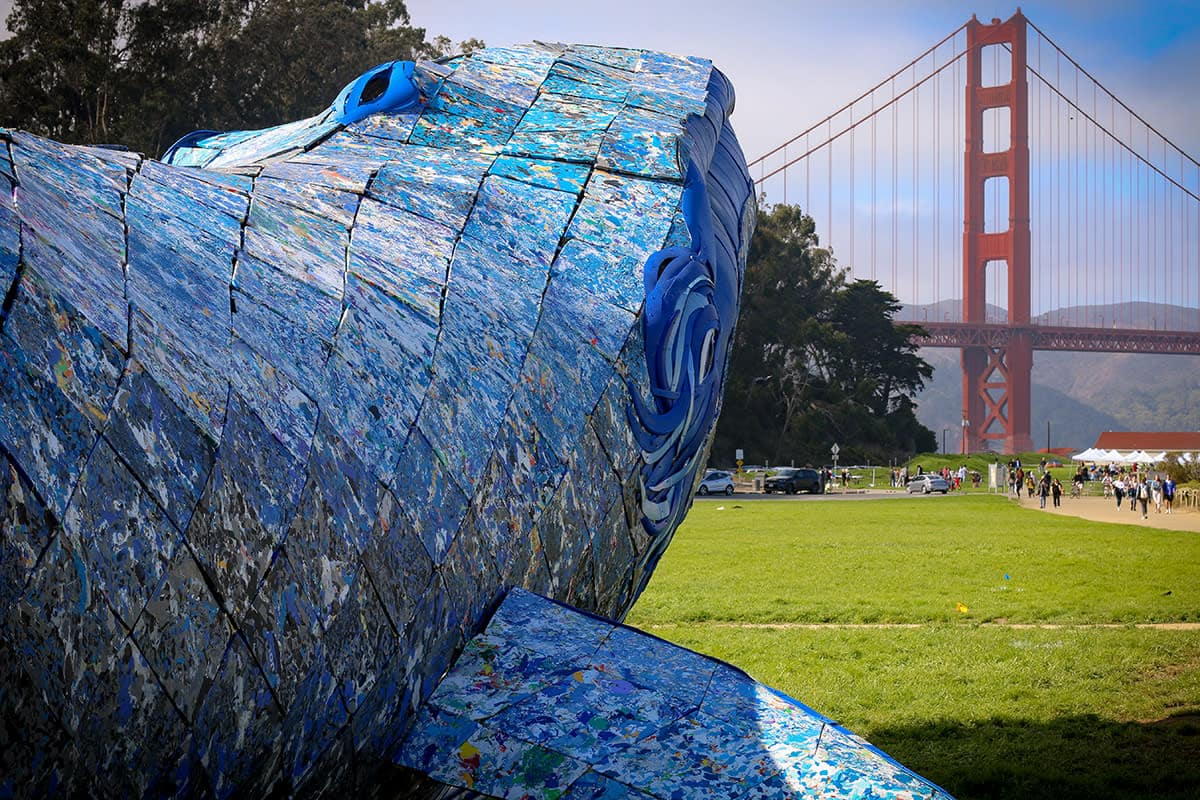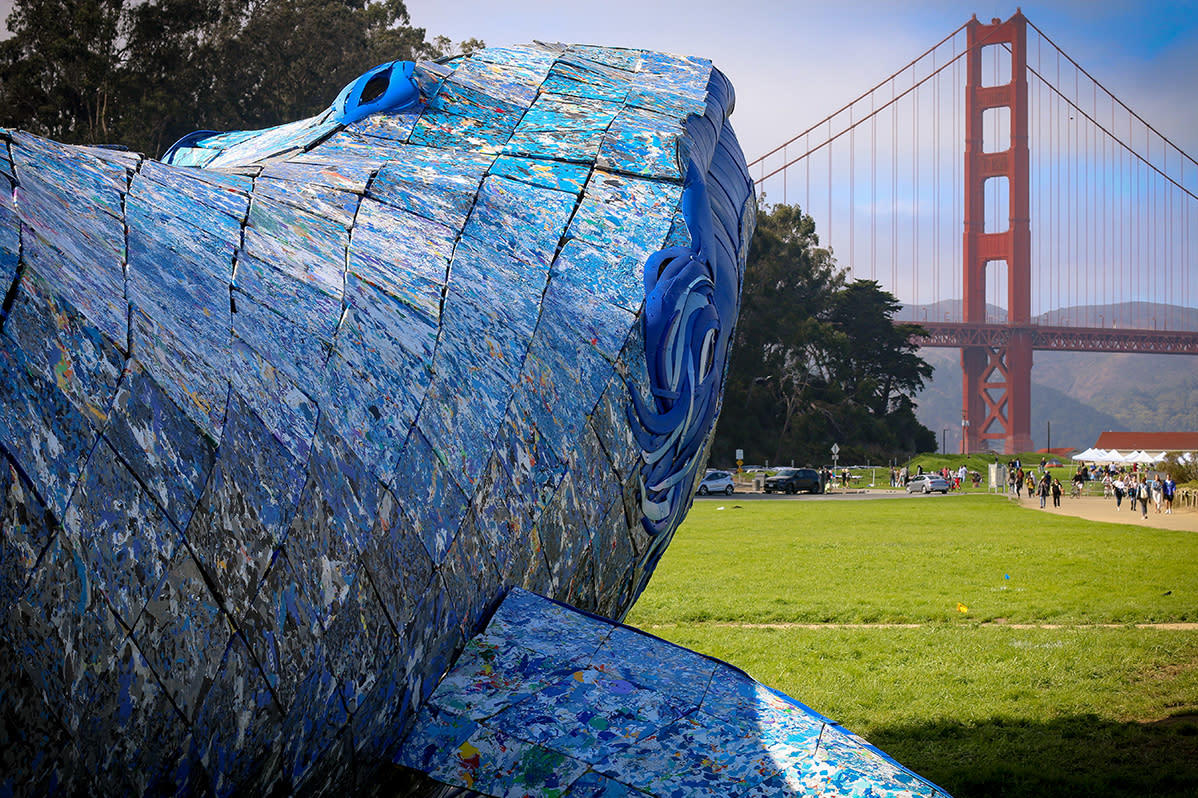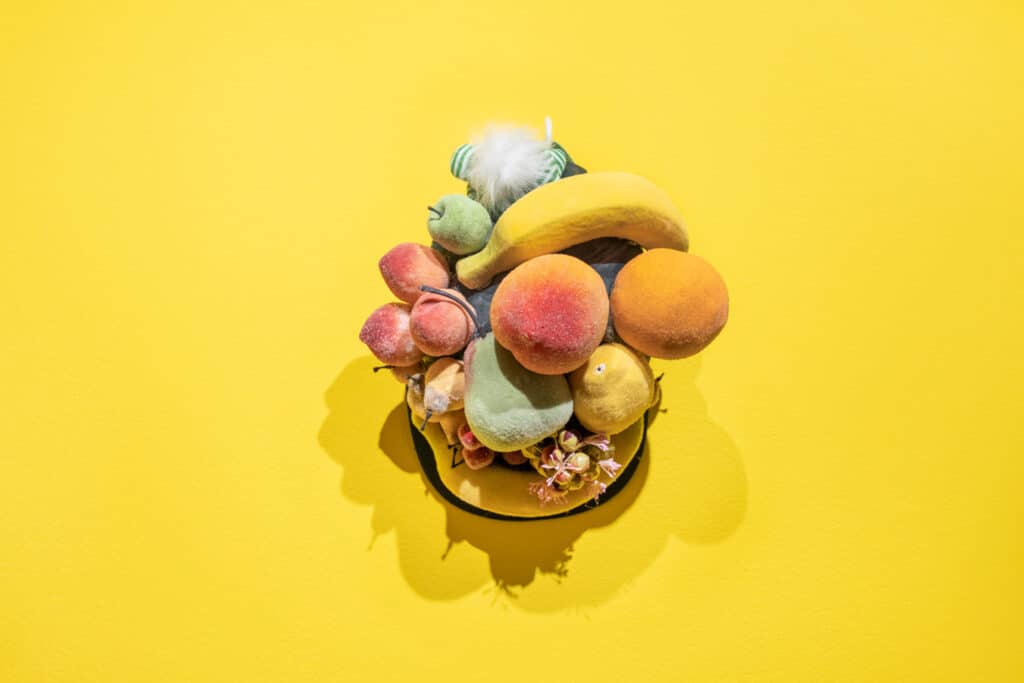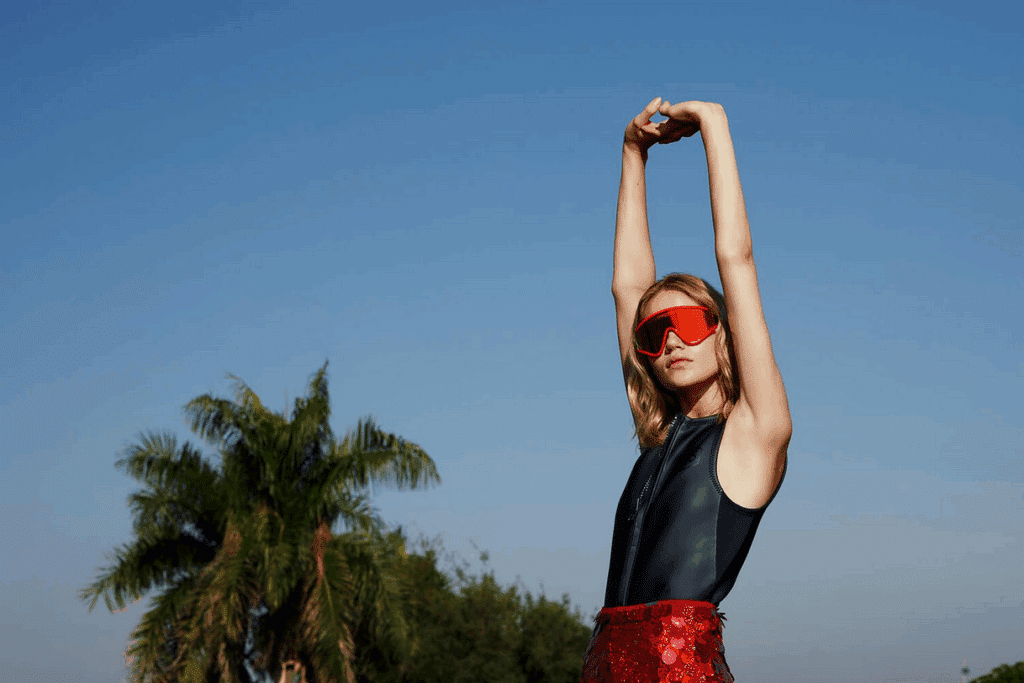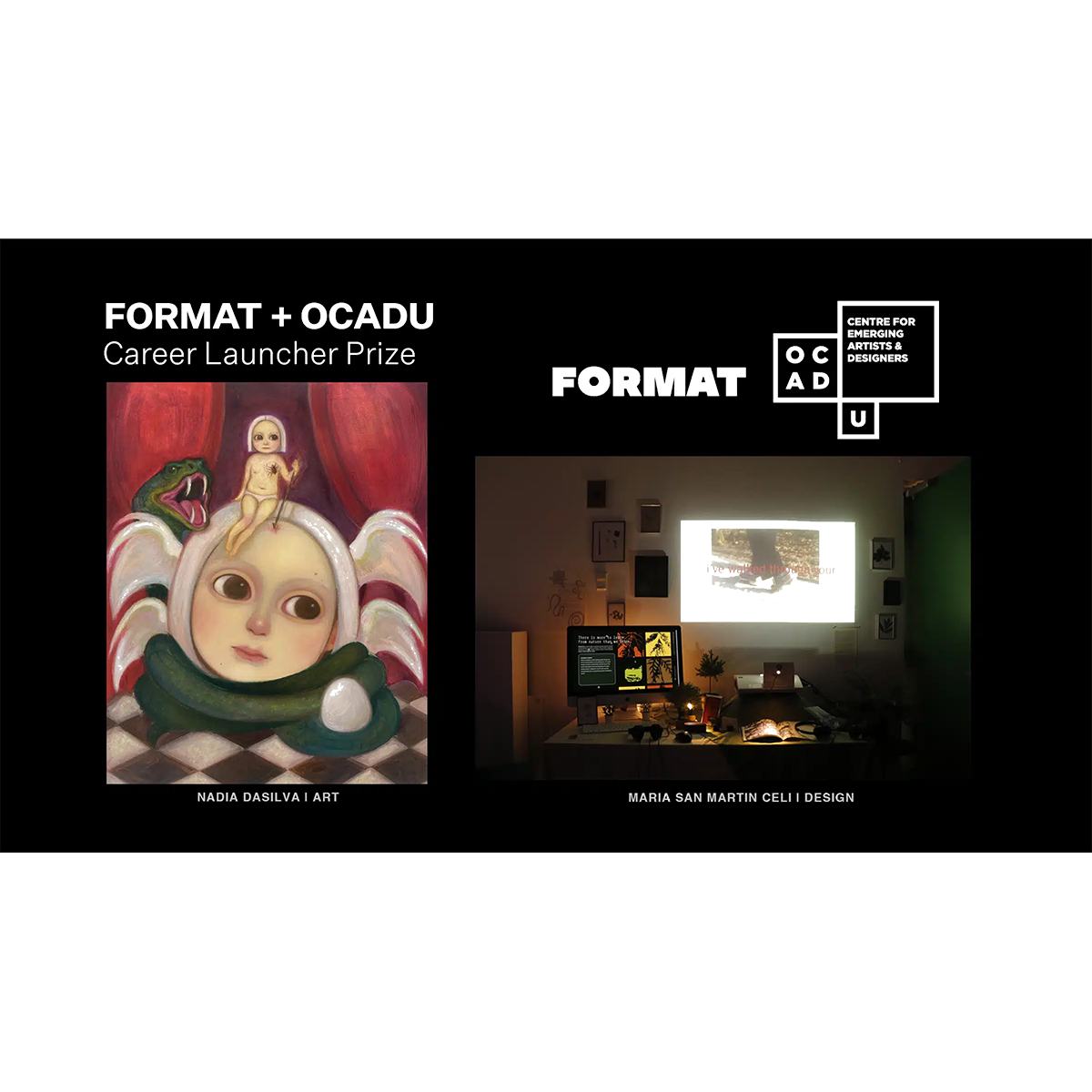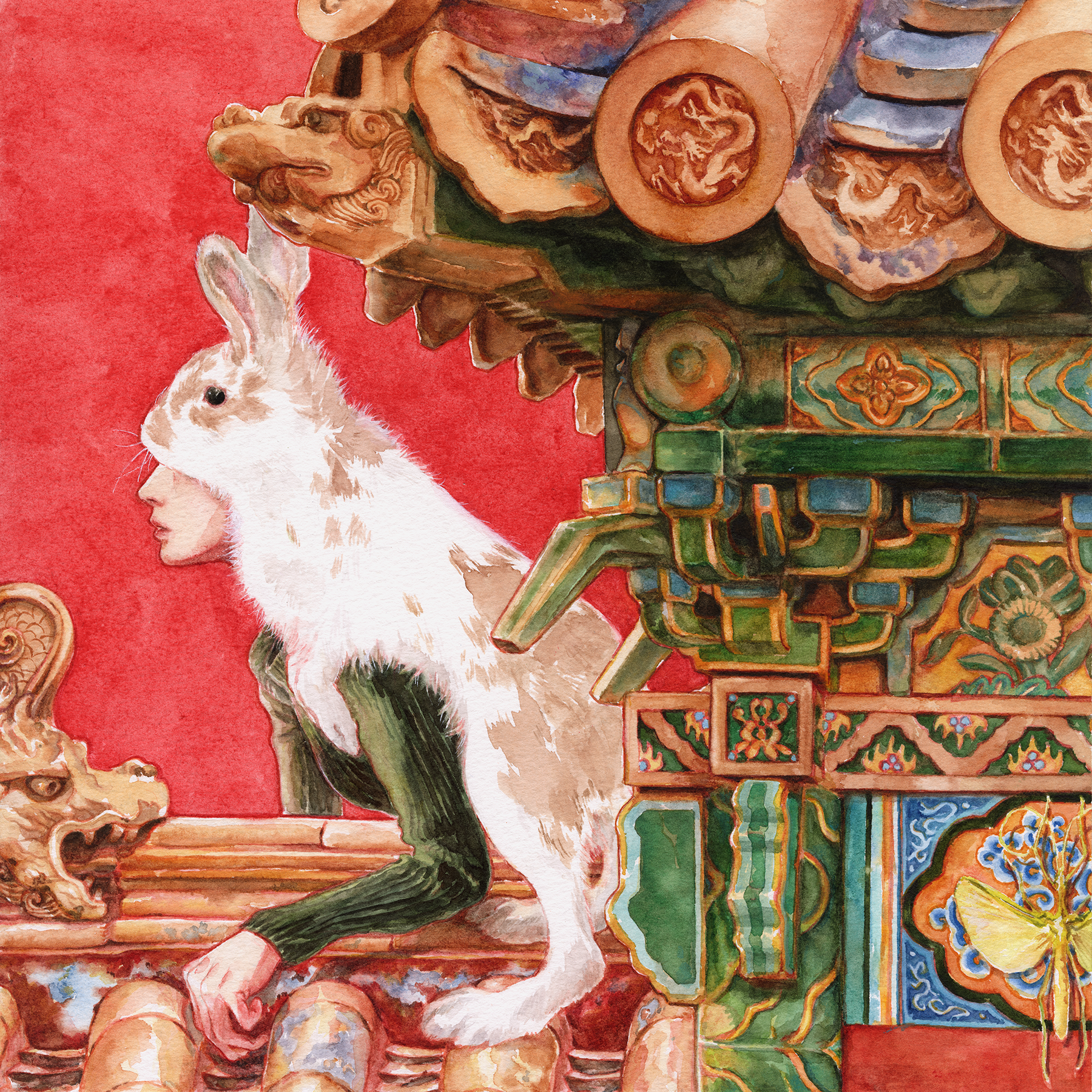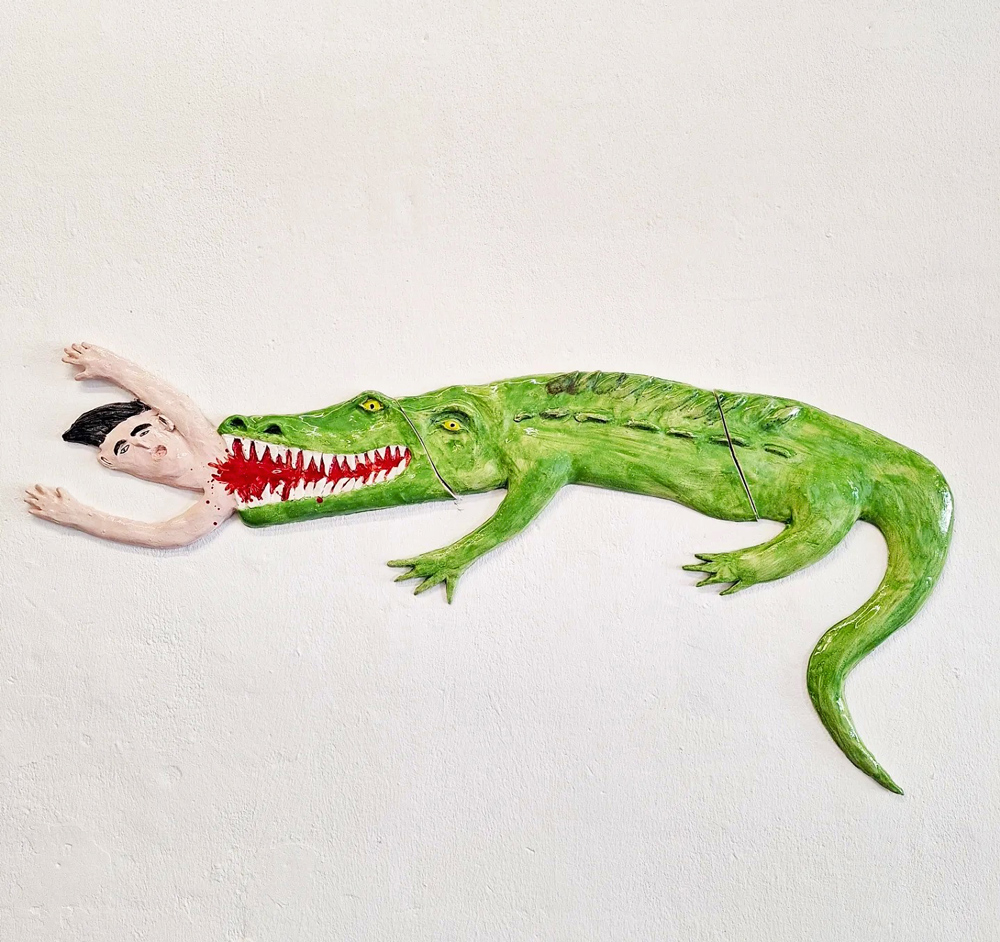In the shadow of the San Francisco Golden Gate bridge stands an 82-foot-long replica of a blue whale, the largest animal ever to live on earth. The life-sized sculpture is drawing a steady stream of visitors eager to get close to its scaly jigsaw skin, made of sheets of coarse blue plastic.
The installation, located Chrissy Park in San Francisco, California, features diamond-shaped tiles made of reprocessed plastic waste collected in the region. Working in tandem with the National Park Service and the Golden Gate National Parks Conservancy, the project is Monterey Bay Aquarium’s effort to bring awareness to the issue of ocean plastic pollution.
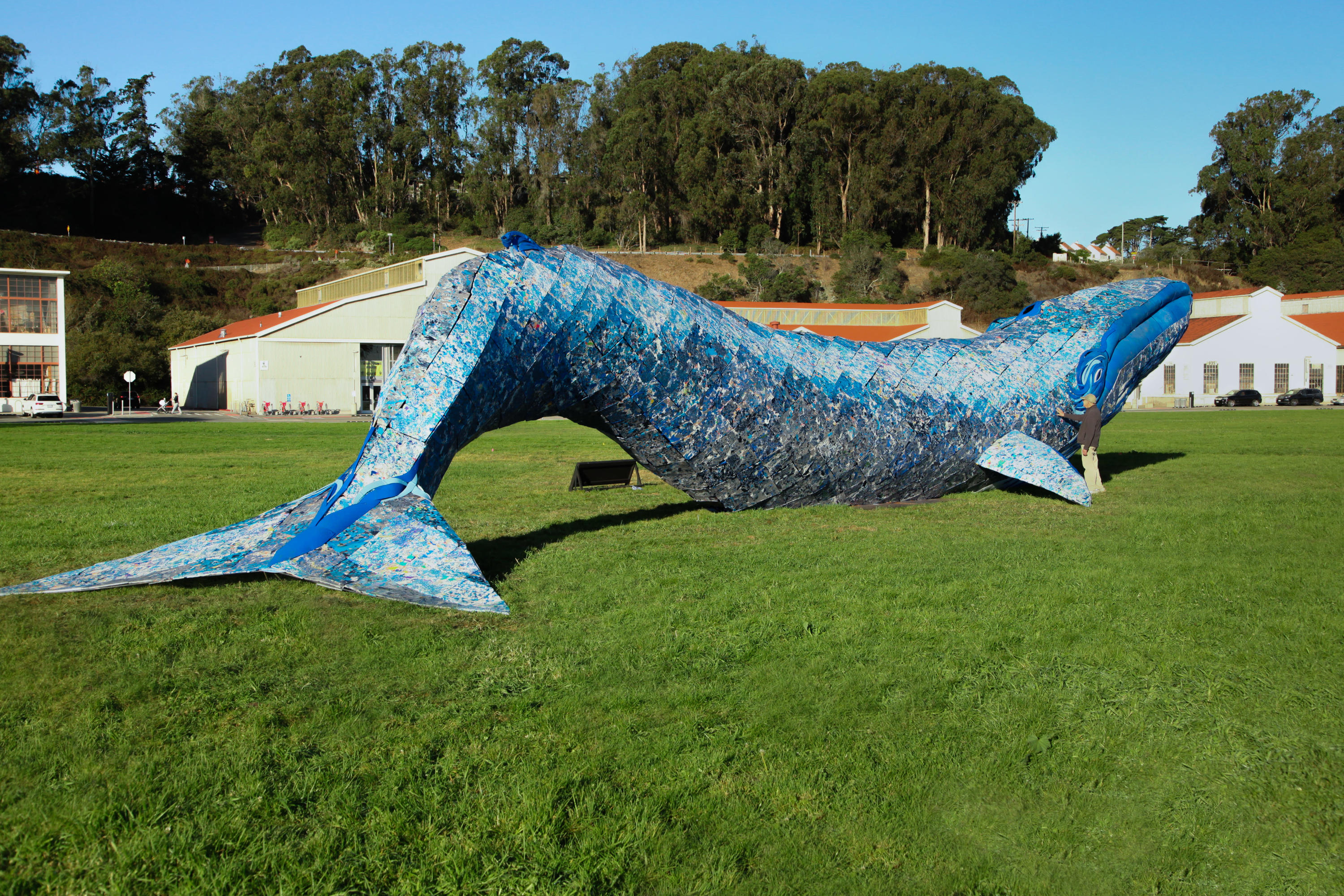
The sight of such a large animal in close proximity is a familiar one for park visitors: a blue whale washed ashore north of San Francisco just two years prior.
“The first reaction was wow, that’s impossible big,” says DJ O’Neil, Creative Director of the project, who was deeply moved by the event. “The scale was nearly incomprehensible—it was just so huge. The whale was the inspiration for the whale that’s on Chrissy Field today.”
The weight of the plastic whale on display—300,000 lbs—represents the amount of plastic waste that ends up in the ocean every nine minutes. The installation allows visitors to connect with the cause by giving them a tangible first-hand experience of an otherwise abstract issue.
Joel Dean Stockdill and Yustina Salnikova are the artists behind the piece. Both the size of Stockdill’s previous installations and his notoriety for working with discarded materials made him the perfect fit for this project. His previous work includes WildLife, an ongoing global sculpture series exploring animal forms at large scale using locally discarded materials. Salnikova, who holds a Bachelor of Applied Science from Berkley University, brought a unique process perspective to the large-scale project in addition to her artistic experience.
The process of reprocessing discarded plastic into the 709 tiles that make up the whale’s skin is an arduous, physically-demanding one: to create the tiles, plastic was collected, delivered, sorted, washed, then cut with a modified wood chipper, baked, and pressed into tiles.

“I think it is important to handle the trash by hand because it provides a visceral experience to the waste that we create in our everyday lives,” says Salnikova.” To spend time with the part of our society that no one wants to spend time with, to love it, to tend to it, to wash it and make it shiny again allows one to commune with the material in a way that most people do not,” she says.
Both artists joined the project because of their investment in environmental causes, and because they felt that art would give park visitors an opportunity to connect with the issue of ocean waste pollution on a personal and tactile level.
“Art can be an important bridge, a mediator in perspectives and an inspiration toward action,” says Salnikova.
The choice of sculpture as the artistic medium in particular is integral to the success of the project, according to Stockdill. To him, sculpture is a medium that has a magnetic quality to it because it prompts personal inquiry and interpretation.
“The nature of sculpture invites people to form an opinion about something, whether that is a shape, color or an idea,” he says.
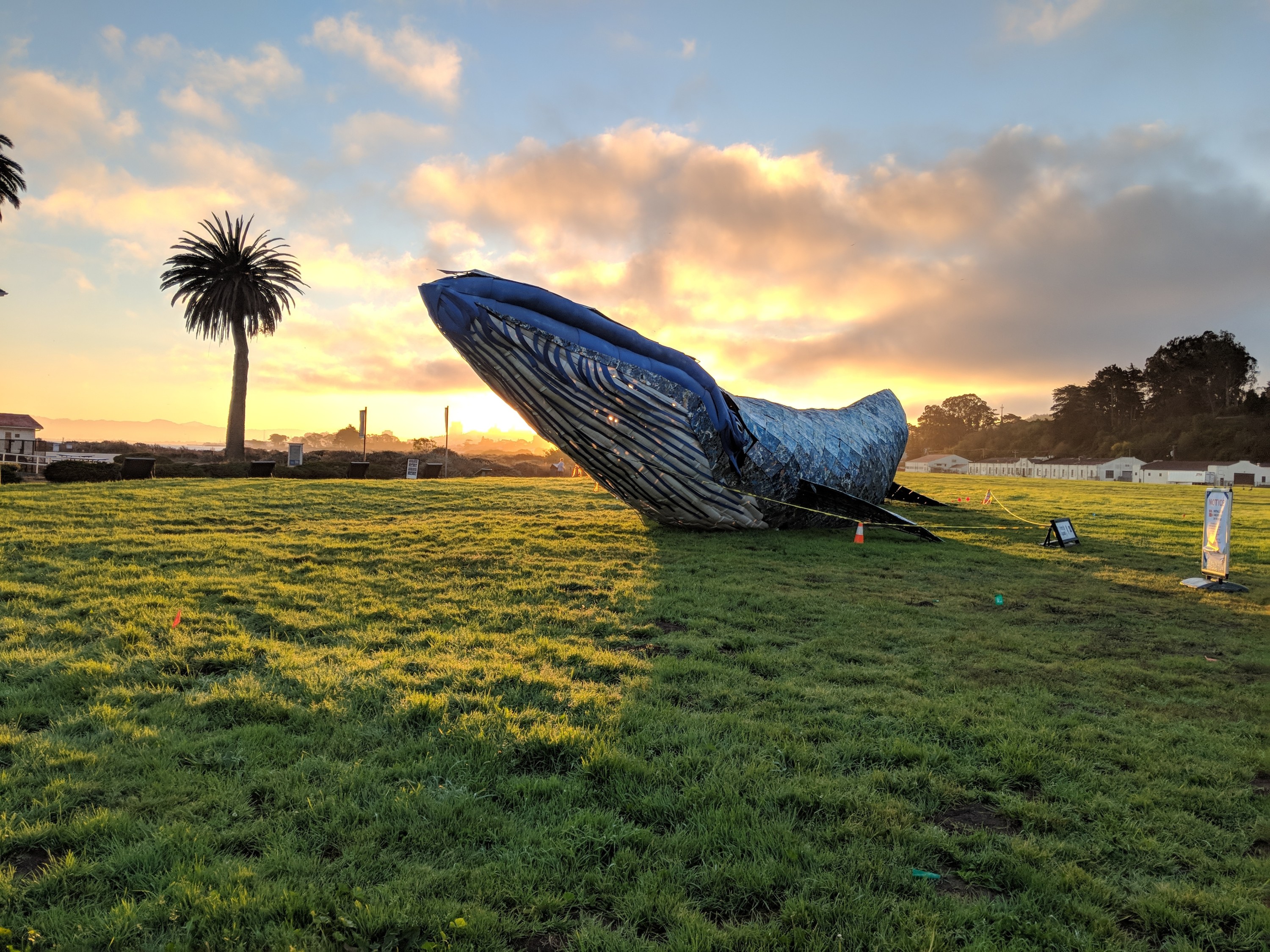
Encouraging curiosity and critical thinking is just one of the ways that art and social causes can raise each other’s voice. Stockdill believes that the relationship between art and social causes is also a mutually beneficial one.
“With the right dynamics, art and social causes can elevate each other,” he says. “The outcome can be greater than the sum of its parts.”
By having a visual representation of the scale of human contribution to ocean pollution through art, Monterey Bay Aquarium hopes the installation will encourage visitors to evaluate their own consumption habits, and take the steps to demand systemic change in plastic processing.
“What Joel has created is incredibly important. We simply need this reminder every day,” says Van Houtan.
